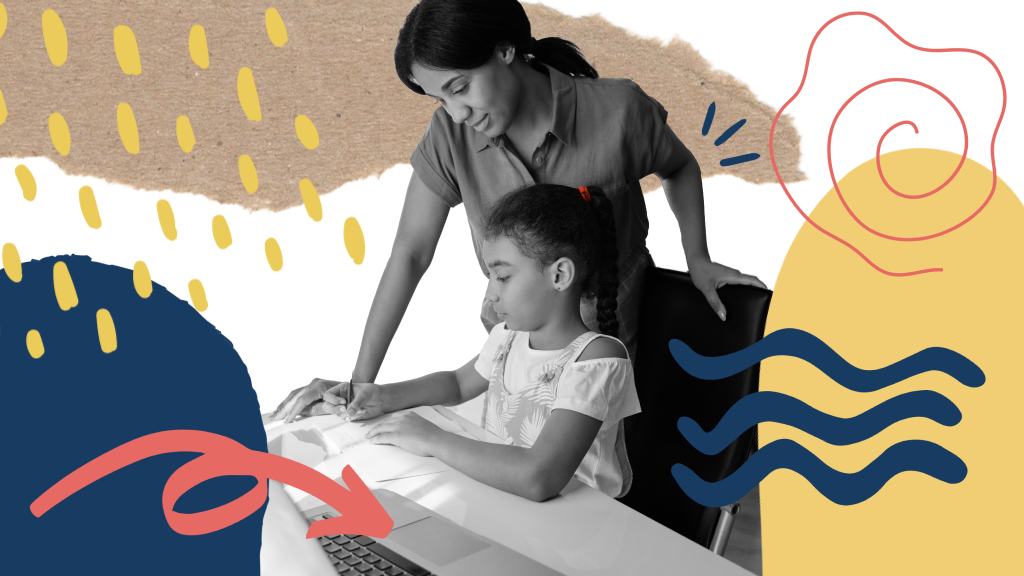How to Help Your Child Deal With Online Harassment
3 Jan 2023

Thanks to social media, the children of today have access to the world in a way that no other generation has before.
The online world has its advantages — for example, it enables young people to connect with others all around the world who share their interests, problems, and aspirations. This can help them cultivate a sense of belonging that not all of them may find in the offline world.
However, as we all know, social media platforms have a dark side, and one of the issues is that they expose children to the risk of online abuse and cyberbullying.
According to Pew Research Center, a majority of teenagers have experienced some form of cyberbullying. While the figures are similar among boys and girls (59% vs. 60%, respectively), girls are more likely to be the victims of name-calling, physical threats, and rumor-spreading. Girls are also more likely to receive explicit images they did not ask for.
All this paints a worrying picture for parents who want to protect their children online. However, it’s not always easy figuring out the best way to respond to online harassment since parents are often not as familiar with the dynamics of social media as their children are.
Additionally, cyberbullying is a unique type of harassment that requires an understanding of how it works and the role social media plays in it.
If you’re a parent who’s concerned about your child’s exposure to cyberbullying, read on. This article will cover the different types of cyberbullying, some signs your child may be the victim of online harassment, and steps you can take to protect them.

Online Harassment: What Does It Look Like?
Online harassment is the use of internet-based devices — such as a smartphone, computer, or tablet — to direct offensive, abusive, insulting, or threatening messages, images, or videos at an individual and/or group, in ways that are likely to cause them alarm or distress.
Just because the harassment occurs online doesn’t mean it affects the victim any less than offline bullying. In fact, in some ways, online harassment is uniquely pervasive since it can follow an individual wherever they go, as long as they have a device that they use to go online.
Additionally, cyberbullies often hide their identity with fake profiles and social media accounts, which can make it scarier since the victim doesn’t know who is targeting them.
Here are a few of the forms online harassment can take:
- Cyberstalking: The repeated and deliberate use of the internet and social media applications to constantly attempt to communicate with someone, usually intended to frighten, intimidate, or exhaust the victim. Other motives include gathering personal information for use in other cyber crimes, such as impersonation and identity theft.
- Online sexual harassment: This is a pernicious form of harassment — known as revenge porn — when abusive content containing sexual images is shared online without the consent of the person(s) in the photos or videos. If the victims are under 18, this is a form of child abuse. Online sexual harassment also includes sending someone sexual photos or videos they haven’t asked for.
- Trolling: Posting inflammatory, controversial, or offensive comments aimed at a person or group of people, usually on a public forum. The aim is to rile up the human(s) being targeted and provoke them to respond.
- Virtual mobbing: Ganging up on someone virtually. This happens when a group of people gets together and bullies a person through hurtful remarks, hate speech, and other forms of abusive speech online.
- Doxing: Releasing someone’s personal details or private information, such as their phone number and home address, that can put them in immediate danger.
- Threats of violence: Communicating the intent to physically harm the victim, their family members, or people close to them.

Signs Your Child Might Be Facing Online Harassment
Depending on your child, they may or may not approach you to confide about cyberbullying or online harassment. Therefore, you should be vigilant to their behavioral cues that may indicate their experience.
Here are some red flags to look out for:
- Changes in behavior, mood, appetite, or sleep.
- Becoming emotionally upset while or after using the Internet or a smartphone.
- Suddenly wanting to stop using the device or the Internet.
- Spending more time than usual alone or in their room.
- Being very secretive or protective of their online life.
- Avoiding school or social events.
- Withdrawing from family and friends or losing interest in their favorite activities.
- Their grades suffer.
It’s important not to automatically conclude that these behaviors indicate online harassment, but if you notice any of them, you should investigate what might be causing them. It could be cyberbullying or another issue.
How Parents Can Address Online Harassment
As a parent, discovering that your child is being harassed or bullied online can be a huge shock. Feelings of confusion, anger on behalf of your child, and sadness are all completely understandable.
However, it’s essential to process your feelings alone so you can be the support your child direly needs at the moment and give them comfort and practical help in dealing with this unsettling situation.
Here are some steps you can take if your child is being bullied online or you suspect that they are.
Discuss What Cyberbullying Looks Like
Talk openly and honestly with your child about the things that can happen online, referencing the list of cyberbullying activities above.
Highlight that children and teens can be cruel to one another and outline steps they can take to protect themselves online and minimize the risk.
Don’t just talk at your child, though — make sure it’s a two-way conversation and be prepared to listen to their experiences.
Educate Yourself
Understanding how apps like Instagram, Twitch, and TikTok work will open your eyes to the possible ways people can commit cyber harassment against your child and enable you to have more informed conversations with them
Set Time and Usage Limits
Establish reasonable rules about what your child can and can’t do on the Internet and set time limits on their computer and phone use.
If you want very young children to use services such as YouTube, activate features such as the Kids Mode that restricts the type of content they consume.
Offer Comfort and Support
Being the victim of cyberbullying can be very upsetting for your child. They may also feel ashamed or like they somehow brought it on themselves.
Let your child know that you’re on their side and will stick by them no matter what they’re going through or what they face — they deserve every bit of support and care that you can provide.
Let Them Know It’s Not Their Fault
Explain to your child that it’s not their fault and that bullying says a lot more about the bully than the victim.
Let your child know they did the right thing by talking to you about it, and reassure them that you’ll take steps to put an end to it.
Notify the School
Tell the principal, school nurse, counselor, or a teacher about the situation. Many schools, school districts, and after-school clubs have mechanism for responding to cyberbullying. These vary by district and state.
Before reporting the problem, let your child know so that you can work out together how to approach the situation in a way you both feel comfortable with.

Help Your Child Stay Safe Online
Social media sites can be a powerful, useful tool when used properly — but it can have negative consequences, such as online harassment, that need to be tackled with adequate sensitivity and support.
If you’re a parent looking for tools to support your child through bullying of any kind — whether on or offline — head over to the Lessonbee Safety Content Library. We have lessons and resources for parents and educators on cyberbullying, conflict resolution, violence prevention, and more.
Read More

Human Trafficking: Understanding the Impact and How to Help

A Guide to Social Emotional Learning for Homeschooling Parents

Online Safety for Parents: How to Safeguard Your Child in the Digital World

The Biggest Challenges To Implementing Social Emotional Learning


